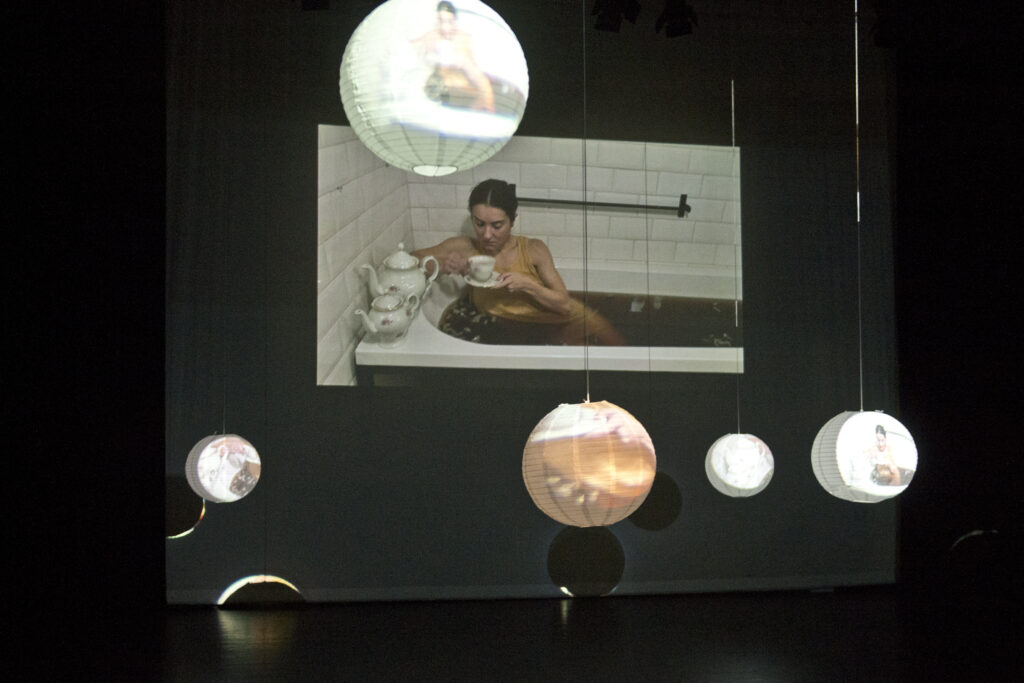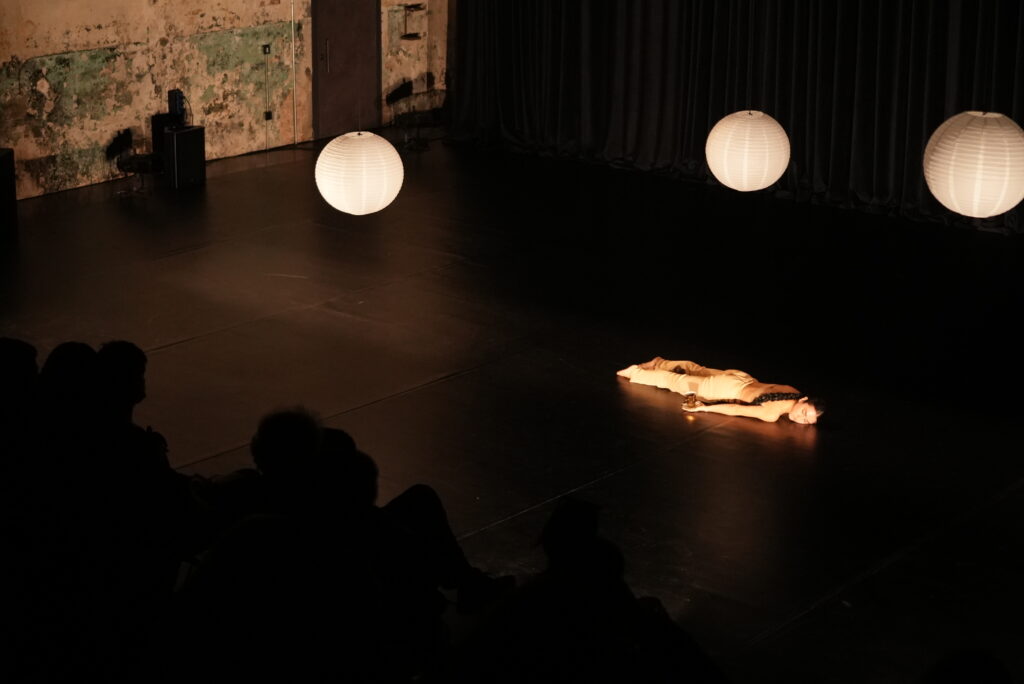Samtal med Canan Yücel Pekiçten
April 2024, Ingeborg Zackariassen

Canan Yücel Pekiçten is a dance artist, choreographer and academic at Mimar Sinan Fine Arts University State Conservatory Contemporary Dance Department in Istanbul.
She is guesting Gothenburg and 3:e Våningen for the second time, this time with her newest work, How to enjoy Ceylon Tea.
The last time she was here, she performed her work All about the Heart at 3:e Våningen, a work in which, as part of her doctoral project, she offered an empowering metamorphosis to three female characters from famous operas that were originally created from a sexist point of view. The Queen of Der Zwerg Lied, Cio-Cio-San of Madame Butterfly, and Pohjan Neito, the title character from the first opera written in Finnish, were given new and alternative lives through Canan’s unconventional take on the archaic stereotypes.
Today Canan tells me about her new work, initially inspired by the opera The Pearl Fishers by Georges Bizet. In her research she quickly became aware of the multiple times tea was described whenever Ceylon was mentioned, and decided to shift her attention to create a reflection on the western perspective on the east and Ceylon Tea as a colonial product. She is interested in the contrast of working with the material of a western classical opera piece while simultaneously questioning the historical ground on which it is built.
Canan explains that she has created some very specific practices for herself through the process of this work, in which she dunks white garments in tea, changing their color to get closer to the color of her skin. A video installation of this practice is shown via a projection on the back wall during the performance, while the live action on the stage includes Canan transporting a teacup in arduous ways while a man is presenting tea and unsolicitedly serving it to the audience. She explains that this is a comment on what happened during the colonial era, that so-called civilization was proposed to the indigenous people despite nobody asking for it …


I ask Canan if she could talk a bit about the movement itself in this work, and she explains that its main themes are labor, resistance, and endurance.
– There is a resistance in the quality of the movement and a struggle within it. I am crawling facing the floor with a teacup in my hand. Towards the end I perform an adagio [slow movement, e.d.] while I still having the teacup in my hand while attempting to balance on one leg. In the background you can hear a detailed description of how to brew a cup of tea.
There’s an excruciating level of detail in the explanation: the exact degrees of the water temperature, the precision of how to pour it… a perfect example of the western desire to explain and analyze everything.
– Another movement quality I work with is the crescendo [progressive increasing intensity, e.d.] where I work with the quality of the smoke of the tea, traveling in space, having less control in the flow of the movements.
In the sound design, Canan has incorporated recordings of railways. She chose train sound as a soundtrack due to the claims that the extensive building of railways has been a “good outcome” of colonization.
Canan tells me that even though these solos are about large topics, they are also about the self, about feeling Othered.
I’m thinking of a quote from bell hooks – True resistance begins with people confronting pain… and wanting to do something to change it.
This Sunday at 14:00 and 16:00 you are welcome to 3:e Våningen, to an untraditional tea party where you’ll get to experience the present while confronting the past.
Photos: Geert Snoeijer and Canberk Ulusan